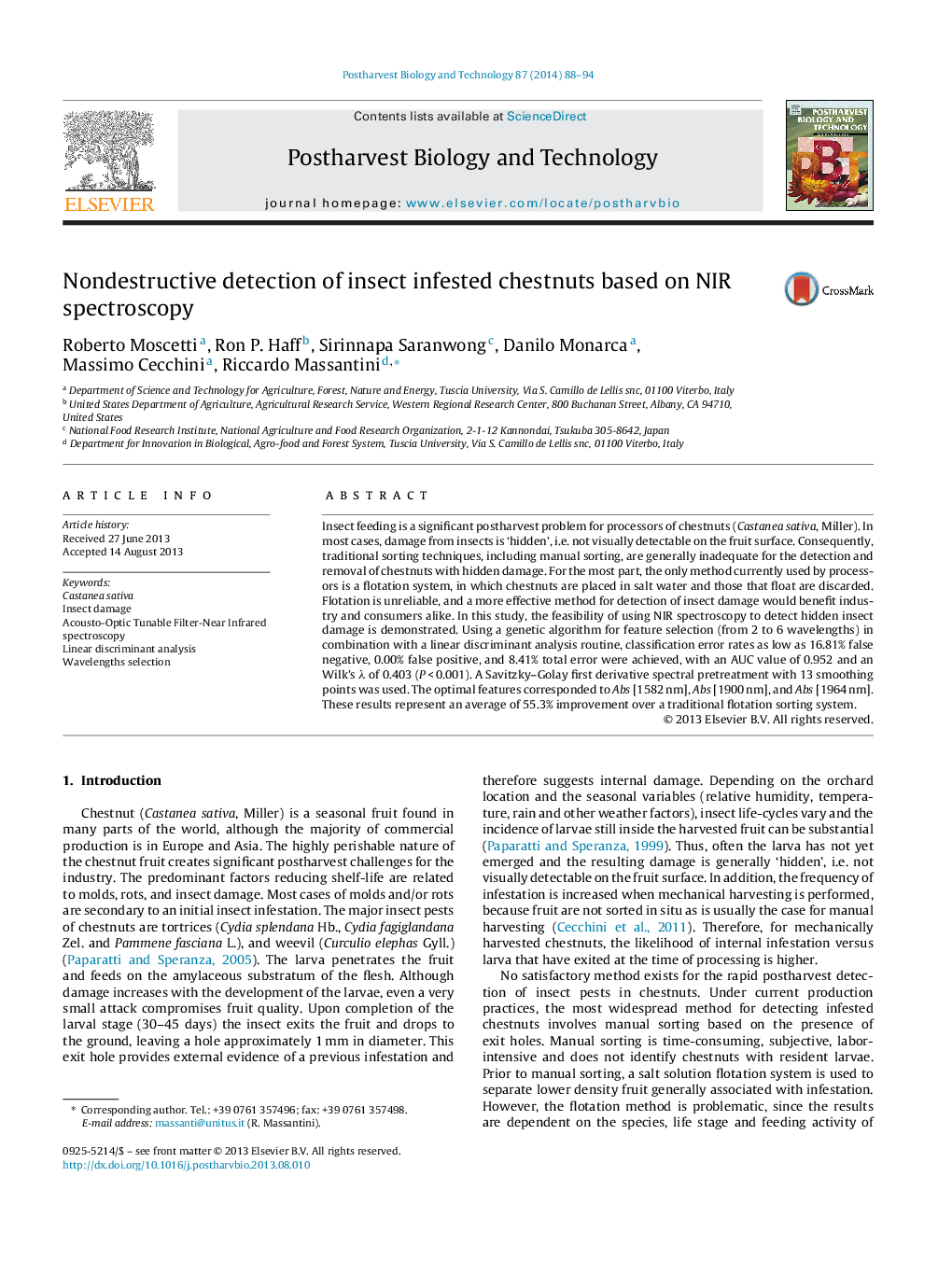| کد مقاله | کد نشریه | سال انتشار | مقاله انگلیسی | نسخه تمام متن |
|---|---|---|---|---|
| 4518333 | 1625007 | 2014 | 7 صفحه PDF | دانلود رایگان |

• NIR spectroscopy is a feasible method for detection of insect damage in chestnut.
• LDA allows reliable detection of infested chestnut.
• Best results depend on the side of the chestnut analyzed.
• The NIR based method yielded an average of 55.3% improvement over current methods.
• The suggested approach provides the basis for a rapid online detection system.
Insect feeding is a significant postharvest problem for processors of chestnuts (Castanea sativa, Miller). In most cases, damage from insects is ‘hidden’, i.e. not visually detectable on the fruit surface. Consequently, traditional sorting techniques, including manual sorting, are generally inadequate for the detection and removal of chestnuts with hidden damage. For the most part, the only method currently used by processors is a flotation system, in which chestnuts are placed in salt water and those that float are discarded. Flotation is unreliable, and a more effective method for detection of insect damage would benefit industry and consumers alike. In this study, the feasibility of using NIR spectroscopy to detect hidden insect damage is demonstrated. Using a genetic algorithm for feature selection (from 2 to 6 wavelengths) in combination with a linear discriminant analysis routine, classification error rates as low as 16.81% false negative, 0.00% false positive, and 8.41% total error were achieved, with an AUC value of 0.952 and an Wilk's λ of 0.403 (P < 0.001). A Savitzky–Golay first derivative spectral pretreatment with 13 smoothing points was used. The optimal features corresponded to Abs [1582 nm], Abs [1900 nm], and Abs [1964 nm]. These results represent an average of 55.3% improvement over a traditional flotation sorting system.
Journal: Postharvest Biology and Technology - Volume 87, January 2014, Pages 88–94